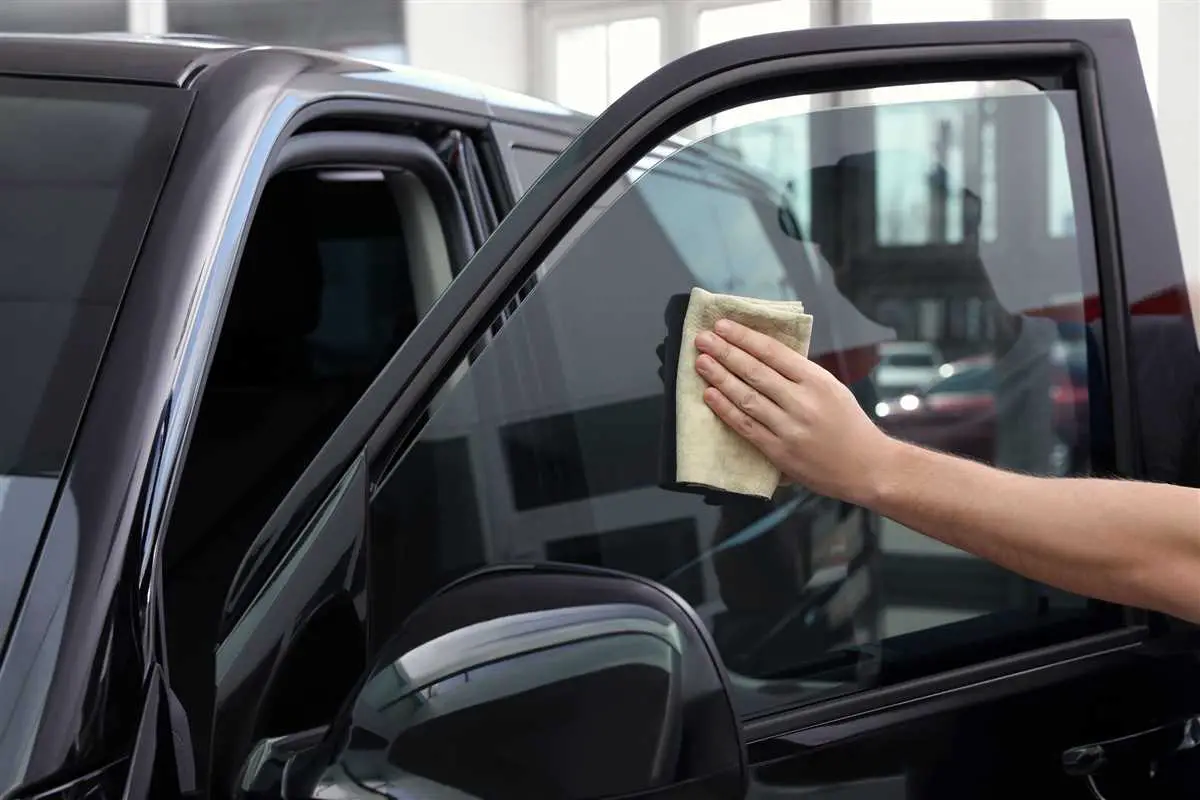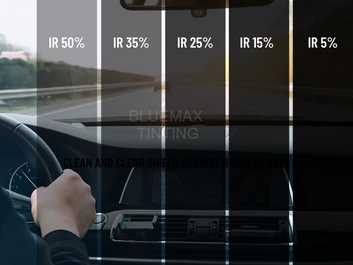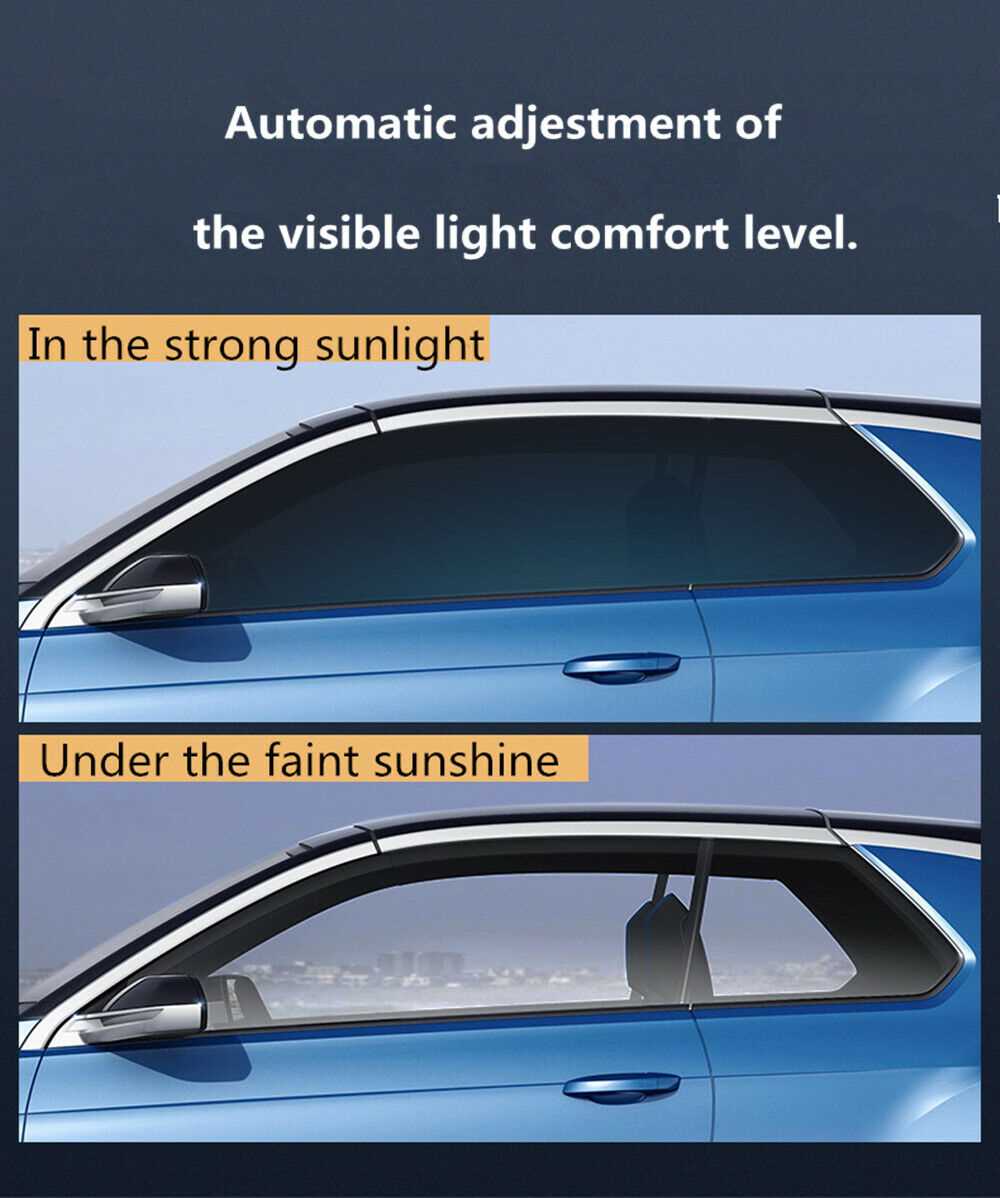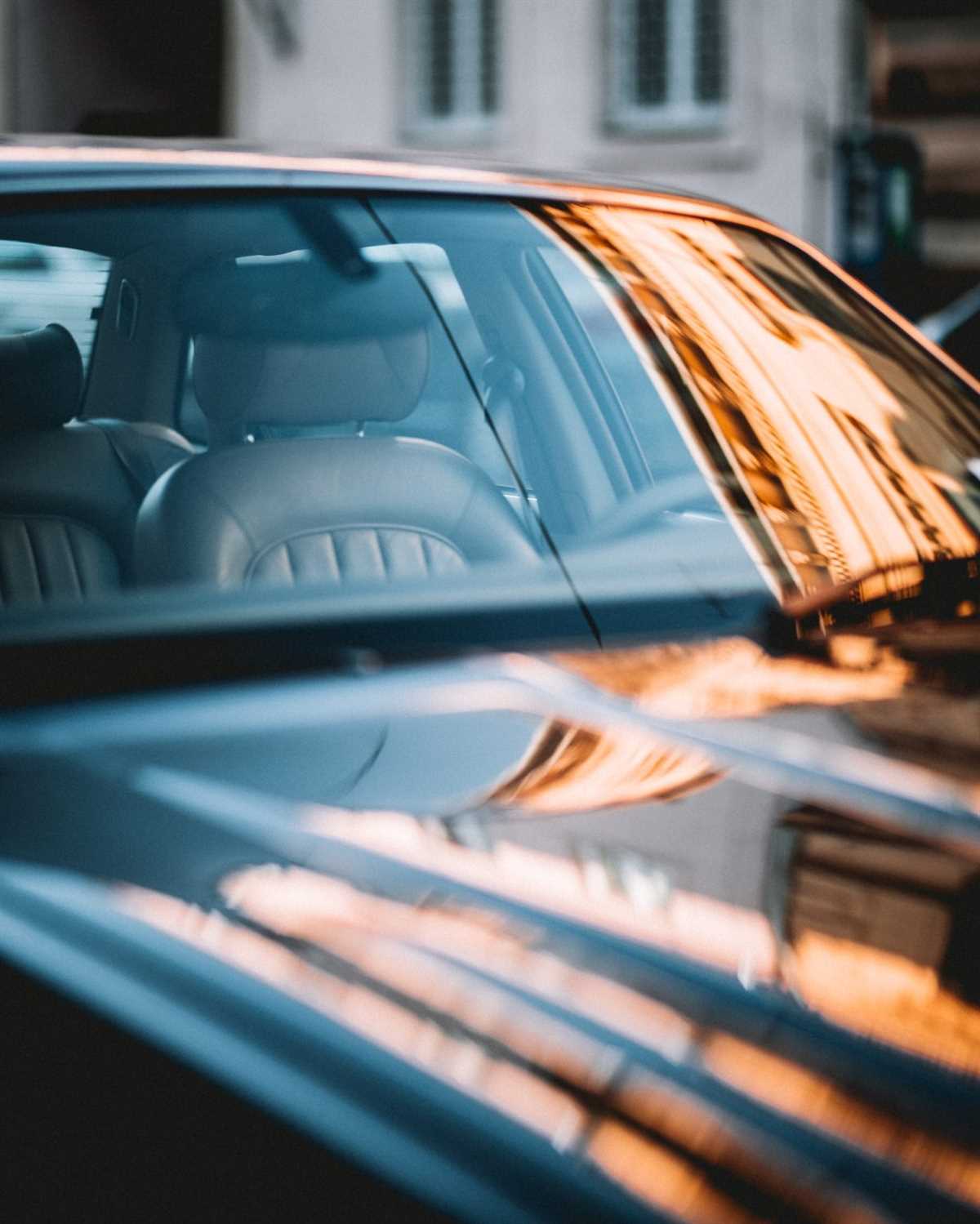Driving a Tesla is an ultimate experience of luxury and advanced technology. One way to enhance your Tesla’s sleek and modern look is by tinting its windows. Window tinting not only adds a touch of sophistication but also provides several benefits such as privacy, heat reduction, and protection against harmful UV rays.
When it comes to tinting your Tesla windows, there are a few important factors to consider. First, you need to check your local laws and regulations regarding window tinting. Different regions have specific rules about the darkness and reflectivity of window films, so it’s crucial to ensure that you comply with the law.
Next, you should choose the type of window film that suits your needs. There are various options available, including dyed film, metalized film, and ceramic film. Dyed films are the most affordable and provide a basic level of heat and UV protection. Metalized films offer better heat rejection and durability, while ceramic films provide the highest level of heat reduction and UV protection.
Once you have decided on the type of window film, it’s time to find a professional tinting service. While you may be tempted to tint the windows yourself, it’s best to leave this job to the experts, especially for a high-tech vehicle like a Tesla. Professional installers have the right tools and expertise to ensure a seamless and flawless tint installation.
In conclusion, window tinting is a great way to enhance the aesthetic appeal and functionality of your Tesla. By following the local regulations, choosing the right type of window film, and relying on professional installers, you can enjoy all the benefits that tinted windows have to offer and make your Tesla stand out on the road.
Why you should tint your Tesla windows
Tinting the windows of your Tesla not only enhances its appearance but also provides numerous benefits. Here are a few reasons why you should consider tinting your Tesla windows:
| 1. Privacy: | Tinted windows can offer increased privacy, preventing outsiders from easily seeing the inside of your car. This is especially important if you frequently leave valuable items in your Tesla. |
| 2. UV Protection: | Window tinting can block up to 99% of the sun’s harmful UV rays. This helps protect your skin from sunburns and reduces the risk of skin cancer. It also prevents the interior of your Tesla from fading and cracking over time due to prolonged sun exposure. |
| 3. Heat Reduction: | Tinted windows can significantly reduce the amount of heat that enters your Tesla, making it more comfortable during hot summer days. This means you won’t have to rely as heavily on your car’s air conditioning system, which can help improve fuel efficiency. |
| 4. Glare Reduction: | Tinted windows can minimize glare from the sun, headlights, and other bright lights, improving visibility and reducing eye strain. This is especially beneficial when driving during sunrise, sunset, or at night. |
| 5. Enhanced Safety: | Window tinting can make your Tesla’s windows more shatter-resistant. In the event of an accident, the tint film can hold shattered glass together, reducing the risk of injury from flying glass shards. |
Overall, tinting your Tesla windows not only adds a touch of style to your vehicle but also provides practical benefits like privacy, UV protection, heat reduction, glare reduction, and enhanced safety. Consider tinting your Tesla windows to improve your driving experience and protect both yourself and your car.
The benefits of tinting your Tesla windows
When it comes to owning a Tesla, there are many benefits that come along with it. One of those benefits is the ability to tint your windows, which can provide numerous advantages for both you and your vehicle.
First and foremost, tinting your Tesla windows can significantly reduce the amount of heat that enters your vehicle. As we all know, sitting in a hot car can be extremely uncomfortable, especially during the summer months. With tinted windows, you can keep your Tesla cooler and enjoy a more pleasant driving experience.
Another benefit of tinting your windows is increased privacy. Tinted windows make it more difficult for others to see inside your vehicle, providing you with a sense of security and peace of mind. Whether you’re parked in a busy parking lot or driving in traffic, tinted windows can help protect your belongings and keep prying eyes out.
Tinted windows also offer protection against harmful UV rays. The sun’s UV rays can not only damage your skin but also fade and deteriorate your car’s interior. Tinted windows help block out these harmful rays, keeping your Tesla’s interior looking like new and protecting your skin from potential damage.
Lastly, tinted windows can enhance the overall appearance of your Tesla. The sleek and stylish look of tinted windows can give your vehicle a more modern and sophisticated look. Whether you choose a light tint or a darker option, tinted windows can make your Tesla stand out from the crowd and turn heads wherever you go.
In conclusion, the benefits of tinting your Tesla windows are numerous. From reducing heat and increasing privacy, to protecting against UV rays and enhancing the appearance of your vehicle, tinted windows are a worthwhile investment. Not only do they provide practical advantages, but they also add a touch of style to your Tesla.
Choosing the right tint for your Tesla
When it comes to choosing the right tint for your Tesla, there are several factors to consider. Tinted windows not only add a sleek and stylish look to your vehicle, but they also offer a range of practical benefits.
One of the first things to think about is the level of tint you want. Tint levels are measured by percentages, with a higher percentage indicating a darker tint. The legal limit for front side windows varies by state, so be sure to check the regulations in your area before making a decision.
Next, consider the type of tint film. Dyed window films are one option, which darken the windows and reduce glare. They are affordable but may not provide as much heat rejection as other types of films.
Another option is metalized window films, which contain metallic particles to block heat and UV rays. These films are more durable and offer better heat rejection, but may interfere with cellular or GPS signals.
Ceramic window films are a high-end choice, providing excellent heat rejection and UV protection without interfering with signals. However, they tend to be more expensive than other options.
In addition to tint level and type, consider the brand and quality of the film. Look for brands that offer warranty coverage and have a reputation for durability and performance.
Lastly, consider whether you want a professional installation or if you are comfortable doing it yourself. Professional installers have the experience and tools to ensure a clean and precise installation, but it can be more costly. If you opt for a DIY installation, be sure to follow the manufacturer’s instructions carefully.
In conclusion, choosing the right tint for your Tesla involves considering factors such as tint level, type of film, brand, and installation method. Take your time to research and make an informed decision to enhance the aesthetics and functionality of your vehicle.
The process of tinting Tesla windows
Tinting your Tesla’s windows can provide various benefits, such as enhanced privacy, reduced heat inside the car, and protection against harmful UV rays. If you have decided to tint your Tesla windows, here is a step-by-step process you can follow:
- Research local tinting laws: Before getting started, it is essential to familiarize yourself with the local laws regarding window tinting. Check the permissible tint percentage for different windows to avoid any legal issues.
- Select a reputable tinting professional: Look for a reliable and experienced window tinting professional who specializes in working with Tesla vehicles. Ask for recommendations, read reviews, and compare prices to make an informed decision.
- Choose the tint film: There are various types and shades of tint films available in the market. Consider factors such as privacy, heat reduction, and UV protection to choose the one that suits your preferences and needs.
- Clean the windows: Thoroughly clean the windows from both sides using a mild glass cleaner and a lint-free cloth. Make sure to remove any dirt, dust, or debris to ensure a smooth tinting process.
- Measure and cut the tint film: Measure the dimensions of each window and then cut the tint film accordingly. It is crucial to be precise and avoid wastage of the film.
- Apply the tint film: Spray a soapy water solution onto the inside of the window, carefully peel off the adhesive backing of the tint film, and apply it to the window. Smooth out any air bubbles or wrinkles using a squeegee or a similar tool.
- Trim and shape the film: Use a sharp blade or a trim tool to trim and shape the tint film according to the window’s contours. Take your time and ensure a clean and professional-looking finish.
- Allow the film to dry: Let the tint film dry completely before rolling down the windows or touching the film. The drying time can vary based on the type of film and weather conditions.
- Inspect the finished result: Carefully inspect the tinted windows for any imperfections, such as bubbles, creases, or edges peeling off. If you notice any issues, contact the tinting professional for necessary corrections.
Remember, window tinting is a delicate process that requires precision and expertise. It is often best to seek professional help to ensure high-quality results and avoid any damage to your Tesla’s windows.
Tips for maintaining tinted Tesla windows
Having tinted windows can enhance the overall appearance of your Tesla and provide you with privacy and protection from harmful UV rays. To ensure that your tinted windows remain in optimal condition for a long time, follow these maintenance tips:
1. Avoid cleaning the windows immediately after tinting:
After getting your windows tinted, it’s best to wait for at least a week before cleaning them. This will allow the tint to fully adhere to the glass, preventing any potential damage.
2. Use mild cleaning solutions:
When it’s time to clean your tinted windows, use a mild cleaning solution without ammonia. Ammonia-based cleaners can damage the tint and cause it to peel or bubble. Instead, opt for a mixture of mild soap and water, or a specialized window cleaner that is safe for tinted windows.
3. Use a soft cloth or sponge:
To avoid scratching the tinted surface, use a soft cloth or sponge when cleaning the windows. Avoid using abrasive materials such as bristle brushes or rough sponges, as they can cause damage to the tint.
4. Do not use sharp objects:
Avoid using sharp objects, such as knives or razor blades, to remove any dirt or debris from the tinted windows. These can easily scratch and damage the tint. Instead, gently use your fingernail or a soft plastic tool to remove any stubborn particles.
5. Protect the tinted surface:
To protect the tinted surface from unnecessary wear and tear, consider using window shades or covers when parking your Tesla under direct sunlight for extended periods. This will help to prevent fading and discoloration of the tint.
6. Regularly inspect the tinted windows:
Take the time to regularly inspect your tinted windows for any signs of damage, such as peeling, bubbling, or scratches. If you notice any issues, contact a professional tint installer to have the damage repaired or the tint replaced.
By following these maintenance tips, you can ensure that your tinted Tesla windows remain in pristine condition, providing you with long-lasting privacy and protection. Proper care and maintenance will also help to extend the lifespan of your tint, saving you money in the long run.
Common misconceptions about tinted Tesla windows
When it comes to tinting the windows of a Tesla, there are several common misconceptions that people often have. These misconceptions can lead to confusion and may prevent you from making an informed decision about whether or not to tint your Tesla windows. In this article, we will address some of the most common misconceptions about tinted Tesla windows and provide the facts to help you make the right choice.
1. Tinted windows reduce visibility: One of the most common misconceptions about tinted windows is that they significantly reduce visibility. While it is true that tinted windows can make the interior of a vehicle darker, modern window tinting technologies have advanced significantly, allowing for various levels of tint darkness that still allow for excellent visibility. It is important to choose the right tint darkness and consult with a professional installer to ensure optimal visibility.
2. Tinted windows are illegal: Another common misconception is that tinted windows are illegal. The legality of window tinting varies from state to state and even from country to country. It is essential to check the local laws and regulations regarding window tinting before installing tints on your Tesla windows. In many cases, there are specific restrictions on the darkness and reflectivity of the tint that must be followed to remain within the legal limits.
3. Tinted windows block all UV rays: While it is true that window tints can block a significant amount of UV rays, it is important to note that not all tints are made equal. Some tints are specifically designed to block a higher percentage of UV rays, while others may offer minimal UV protection. If you are concerned about UV protection, it is crucial to choose a high-quality tint that provides adequate protection.
4. Tinted windows cause excessive heat buildup: Some people believe that tinted windows cause the inside of the car to become excessively hot. While window tints can reduce the heat entering the car by blocking a portion of the solar energy, it is important to note that the heat reduction is not drastic. High-quality tints can help maintain a more comfortable temperature inside the vehicle, but they are not a substitute for other cooling methods like air conditioning.
5. Tinted windows are permanent: Many individuals wrongly believe that once the windows are tinted, they cannot be reversed or altered. In reality, window tints can be removed or replaced if desired. However, the process of removing window tints can be time-consuming and may require professional assistance to avoid damaging the glass or defrosting elements. It is essential to consider this aspect and choose a tint option that aligns with your long-term preferences.
In conclusion, it is important to separate misinformation from the facts when it comes to tinting the windows of your Tesla. Understanding the common misconceptions about tinted Tesla windows can help you make an informed decision that suits your needs and preferences. Consult with a professional tint installer to ensure the best outcome for your Tesla windows.









